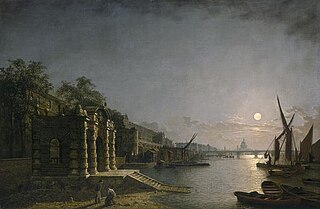
George Villiers, 1st Duke of Buckingham, KG( VIL-ərz; 28 August 1592 – 23 August 1628), was an English courtier, statesman, and patron of the arts. He was a favourite and self-described "lover" of King James I of England. Buckingham remained at the height of royal favour for the first three years of the reign of James's son, King Charles I, until a disgruntled army officer assassinated him.
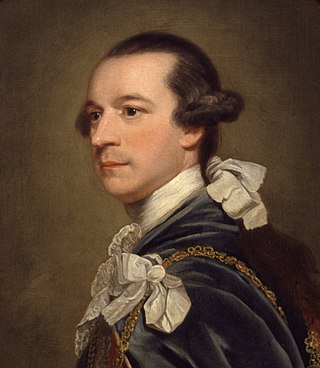
Charles Watson-Wentworth, 2nd Marquess of Rockingham, was a British Whig statesman and magnate, most notable for his two terms as prime minister of Great Britain. He became the patron of many Whigs, known as the Rockingham Whigs, and served as a leading Whig grandee. He served in only two high offices during his lifetime but was nonetheless very influential during his one and a half years of service.

William Henry Cavendish Cavendish-Bentinck, 3rd Duke of Portland, was a British Whig and then a Tory politician during the late Georgian era. He served as Chancellor of the University of Oxford (1792–1809) and as Prime Minister of Great Britain (1783) and then of the United Kingdom (1807–1809). The gap of 26 years between his two terms as Prime Minister is the longest of any British Prime Minister. He was also the fourth great-grandfather of King Charles III through his great-granddaughter Cecilia Bowes-Lyon, Countess of Strathmore and Kinghorne.

Strand is a major thoroughfare in the City of Westminster, Central London. The street, which is part of London's West End theatreland, runs just over 3⁄4 mile (1.2 km) from Trafalgar Square eastwards to Temple Bar, where the road becomes Fleet Street in the City of London, and is part of the A4, a main road running west from inner London.

Fitzrovia is a district of central London, England, near the West End. The eastern part of area is in the London Borough of Camden, and the western in the City of Westminster. It has its roots in the Manor of Tottenham Court, and was urbanised in the 18th century. Its name was coined in the late 1930s by Tom Driberg.

St Martin-in-the-Fields is a Church of England parish church at the north-east corner of Trafalgar Square in the City of Westminster, London. It is dedicated to Saint Martin of Tours. There has been a church on the site since at least the medieval period. It was at that time located in the farmlands and fields beyond the London wall, when it was awarded to Westminster Abbey for oversight.

The Church of St Margaret, Westminster Abbey is in the grounds of Westminster Abbey on Parliament Square, London, England. It is dedicated to Margaret of Antioch, and forms part of a single World Heritage Site with the Palace of Westminster and Westminster Abbey.

St James's is a central district in the City of Westminster, London, forming part of the West End. The area was once part of the northwestern gardens and parks of St. James's Palace. During the Restoration in the 17th century, the area was developed as a residential location for the British aristocracy, and around the 19th century was the focus of the development of their gentlemen's clubs. Once part of the parish of St Martin in the Fields, much of it formed the parish of St James from 1685 to 1922. Since the Second World War the area has transitioned from residential to commercial use.

Jermyn Street is a one-way street in the St James's area of the City of Westminster in London, England. It is to the south of, parallel, and adjacent to Piccadilly. Jermyn Street is known as a street for gentlemen's-clothing retailers in the West End.

William Wentworth-Fitzwilliam, 4th Earl Fitzwilliam, PC, styled Viscount Milton until 1756, was a British Whig statesman of the late 18th and early 19th centuries. In 1782 he inherited the estates of his uncle Charles Watson-Wentworth, 2nd Marquess of Rockingham, making him one of the richest people in Britain. He played a leading part in Whig politics until the 1820s.
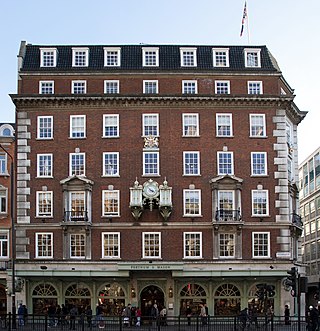
Fortnum & Mason is an upmarket department store in London, England. The main store is located at 181 Piccadilly in the St James's area of London, where it was established in 1707 by William Fortnum and Hugh Mason. There are additional stores at The Royal Exchange, St Pancras railway station and Heathrow Airport in Greater London, at K11 Musea in Hong Kong, as well as various stockists worldwide. Fortnum & Mason is privately owned by Wittington Investments Limited.

The Club or Literary Club is a London dining club founded in February 1764 by the artist Joshua Reynolds and essayist Samuel Johnson, with Edmund Burke, the Anglo-Irish philosopher-politician.

Sir George Villiers was an English knight and country gentleman. He was a High Sheriff of Leicestershire for the year 1591, and later was briefly a Knight of the Shire, a Member of Parliament representing the county of Leicestershire.
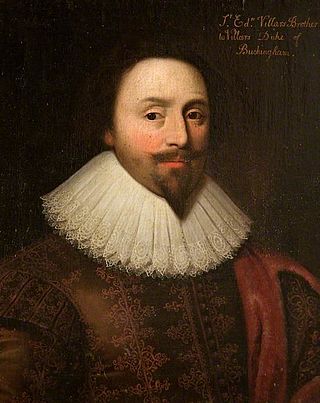
Sir Edward Villiers was an English nobleman from Leicestershire and member of the Villiers family, whose younger half-brother George Villiers, 1st Duke of Buckingham, was a favourite of both James VI and I and his son Charles. Through his influence, Sir Edward gained various positions, including Master of the Mint, Member of Parliament for Westminster and Lord President of Munster. He died in Ireland in September 1626.

Mary Ethel Harcourt, Viscountess Harcourt GBE (née Burns; 26 August 1874 – 7 January 1961) was an American-born British aristocrat and philanthropist.
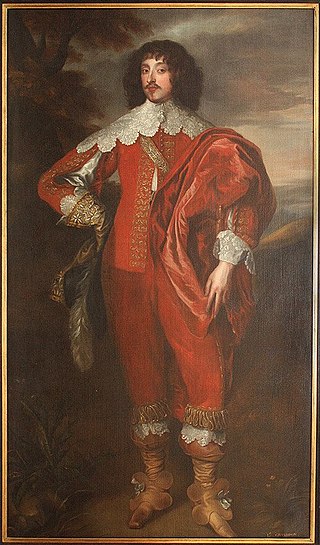
William Villiers, 2nd Viscount Grandison was an Irish peer and Royalist soldier who was fatally wounded during the First English Civil War in 1643.

Mason's Yard is a street in London SW1, England.
The Chenil Gallery was a British art gallery and sometime-music studio in Chelsea, London between 1905 and 1927, and later the location of various businesses referencing this early use.














